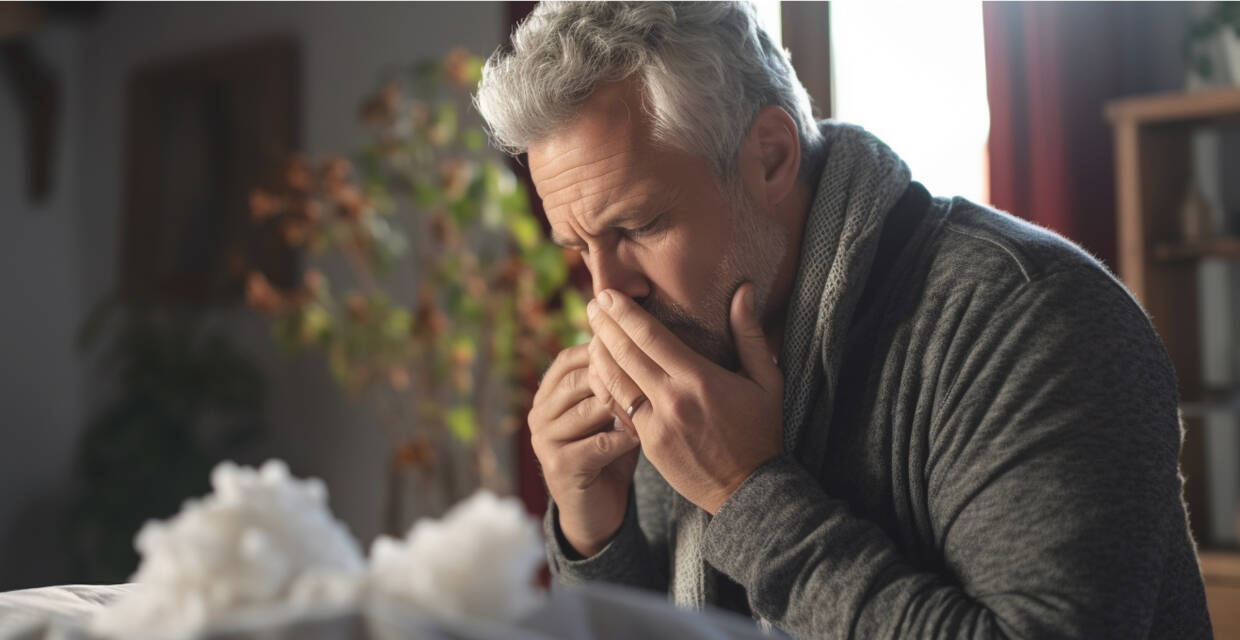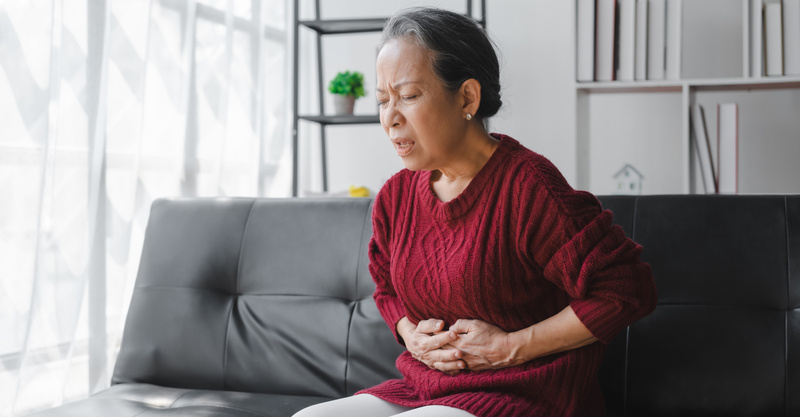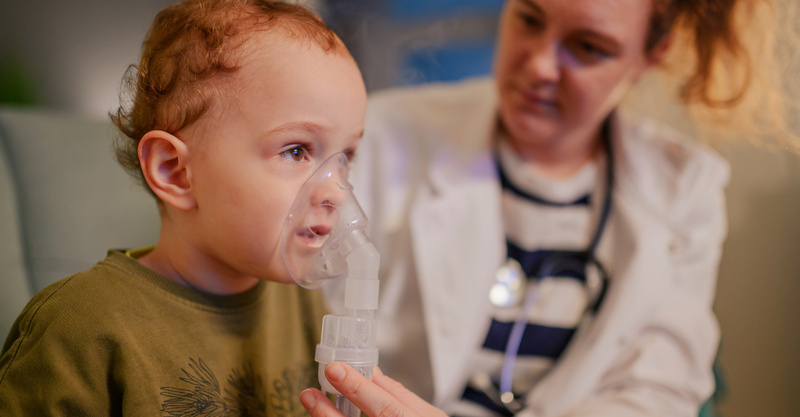Key Points
- Pneumonia is a serious respiratory infection caused by various pathogens and can affect people of all ages.
- Common symptoms of pneumonia include coughing, fever, chest pain, shortness of breath, and fatigue.
- Urgent care clinics offer diagnostic tools, experienced staff, and prompt treatment for mild to moderate cases of pneumonia.
Pneumonia is a serious respiratory infection that can affect people of any age. It can be especially dangerous for the elderly, young children, and those with weakened immune systems, according to the Mayo Clinic. In this article, we'll discuss the symptoms and risk factors of pneumonia, as well as when you could visit an urgent care clinic for treatment.
First, it is important to understand that pneumonia can be caused by a variety of bacteria, viruses, or fungi. The Mayo Clinic notes that any of these pathogens can infect the lungs and cause inflammation that leads to pneumonia. The common symptoms of pneumonia, according to the Mayo Clinic, include:
- Coughing
- Fever
- Chills
- Shortness of breath
- Chest pain
- Fatigue
There are also certain factors that can increase your risk of developing pneumonia, according to the Mayo Clinic. These factors include:
- Being a smoker
- Having a chronic lung disease
- Having a weakened immune system
- Being exposed to certain chemicals or pollutants
If you have any of these risk factors, it's important to be aware of the symptoms of pneumonia, so you know when to seek medical attention.
Symptoms of Pneumonia
If you have pneumonia, you may experience a range of symptoms that can vary in severity, according to the Cleveland Clinic. They also note that the symptoms may come on gradually or suddenly and can include:
- Cough - The Mayo Clinic notes that you may develop a cough that produces phlegm (mucus). The phlegm could appear green, yellow, or bloody.
- Fever - You may have a fever (above 100.4°F or 38°C), and your body temperature may fluctuate between high and normal according to the Cleveland Clinic.
- Shortness of breath - You may experience difficulty breathing or feel short of breath, especially when you exert yourself, according to the Cleveland Clinic.
- Chest pain - You may feel pain in your chest when you breathe deeply or cough, according to the Mayo Clinic.
- Fatigue - You may feel tired and weak, and have a lack of energy, according to the Mayo Clinic.
- Sweating - You may experience sweating, especially at night, according to the Cleveland Clinic.
The Cleveland Clinic also notes that in some cases, pneumonia can cause additional symptoms such as nausea, vomiting, and diarrhea.
It is important to note that some people with pneumonia may not experience any symptoms at all. This is more common in older adults, young children, and people with weakened immune systems, according to the Mayo Clinic.
Getting Diagnosed With Pneumonia
If you suspect that you have pneumonia, it is important to seek medical attention right away, according to the Cleveland Clinic. Getting diagnosed with pneumonia usually involves a series of tests to confirm the presence of an infection in your lungs. Below is more about the various diagnostic methods that healthcare providers may use to diagnose pneumonia.
Physical Examination
During a physical examination, the National Library of Medicine (NLM) notes that your healthcare provider may listen to your lungs with a stethoscope to check for abnormal sounds—such as wheezing or crackling. They will also check your vital signs (temperature, heart rate, and blood pressure), as well as ask you questions about your health history and current symptoms.
Chest X-ray
A chest X-ray is one of the most common diagnostic tests used to diagnose pneumonia, according to the NLM. It allows your healthcare provider to see the condition of your respiratory system and determine if there is any inflammation or fluid buildup in your lungs.
Blood Tests
Blood tests can help determine the type of bacteria or virus that is responsible for your case of pneumonia. The NLM also notes that blood tests can provide information about the severity of your infection and help your doctor decide on the most appropriate treatment.
Sputum Culture
According to the NLM, a sputum culture involves collecting a sample of your phlegm and testing it for the presence of bacteria or fungi. This test can help diagnose many lung conditions, including pneumonia.
CT Scan
A CT scan is a detailed imaging test that can provide a more accurate picture of your lungs, according to the NLM. The NLM also notes that this diagnostic tool is usually only used if your healthcare provider suspects that your pneumonia is severe or if there are complications.
Bronchoscopy
A bronchoscopy is a procedure that involves passing a thin, flexible tube through your nose or mouth and into your lungs. The NLM describes this procedure as a way for your healthcare provider to take a sample of your lung tissue or fluids for further testing. Like the CT scan, this diagnostic test is usually only necessary for severe or complicated cases according to the NLM.
How Pneumonia Develops
There are several ways that you can get pneumonia, according to the Mayo Clinic and Cleveland Clinic.
Community-acquired
Community-acquired pneumonia (“CAP”) is the most common type of pneumonia, according to the Mayo Clinic. It is caused by bacteria, viruses, or other infectious agents that are commonly found in the community. CAP can affect people of all ages, but the Mayo Clinic notes that it is more common in young children, older adults, and people with weakened immune systems.
Hospital-acquired
Hospital-acquired pneumonia (“HAP”) is a type of pneumonia that develops during a hospital stay. HAP can be caused by bacteria, viruses, or other infectious agents that are commonly found in hospitals, according to the Mayo Clinic. The Cleveland Clinic also notes that HAP is more common in people who are on a ventilator or have a weakened immune system.
Aspiration-Induced Pneumonia
Aspiration-induced pneumonia is a type of pneumonia that develops when you inhale food, liquid, or vomit into your lungs. The Mayo Clinic notes that this can happen if:
- You have a swallowing problem
- You are unconscious
- You have a weakened immune system
- During a surgical procedure
Pneumonia can also be classified based on the location of the infection in the lungs, according to the Mayo Clinic. The terms lobar pneumonia and bronchopneumonia describe two common types of pneumonia based on their location in the respiratory tract. The type of pneumonia you have will determine your treatment and your recovery process.
The Mayo Clinic stresses that it is important to seek medical attention if you suspect you have pneumonia, as it can be a serious and potentially life-threatening condition if left untreated.
Risk Factors for Pneumonia
Certain factors can increase your risk of developing pneumonia, according to the Mayo Clinic. Here are some of the most common risk factors that Mayo lists:
- Age
- Smoking
- Chronic lung disease
- Weakened immune system
- Hospitalization
- Close contact with someone who has pneumonia
In addition to these risk factors, the Mayo Clinic notes that certain lifestyle choices and environmental factors can also increase your risk of developing pneumonia. For example, living in a crowded or polluted environment can make it easier for you to contract the infection.
Treatment Options for Pneumonia
If you have been diagnosed with pneumonia, your doctor will recommend the most appropriate treatment plan based on the cause of your infection, and its severity. The Mayo Clinic notes that common treatment options include:
- Antibiotic medication
- Antiviral medication
- Oxygen therapy
- Other supportive care such as fever reducers, cough medicine, and breathing treatments
Below you will find more details about each of the common treatments for pneumonia.
Antibiotics
If your pneumonia is caused by bacteria, your doctor will likely prescribe antibiotics. The type of antibiotic prescribed will depend on the severity of your infection and your medical history, according to the NLM. The Mayo Clinic notes that you will need to take the full course of antibiotics as prescribed by your doctor, even if you start feeling better before the medication is finished.
Antivirals
If your pneumonia is caused by a virus, your doctor may prescribe antiviral medication to help cure it. Antivirals are most effective when started within 48 hours of the onset of symptoms, according to the NLM. The NLM also notes that these medications can help reduce the severity of your symptoms and shorten the duration of your illness.
Oxygen Therapy
If your case of pneumonia is severe, you may need oxygen therapy to help you breathe, according to the Mayo Clinic. Oxygen can be delivered through a mask or nasal cannula. Your oxygen levels will be monitored closely to ensure that you are receiving the appropriate amount of oxygen. In some critical situations, the Mayo Clinic notes that the use of a ventilator may be necessary to provide enough oxygen.
Supportive Care
Supportive care is an important part of pneumonia treatment. The Mayo Clinic notes supportive care may include:
- Over-the-counter medications to reduce fever and relieve pain
- Staying hydrated
- Getting plenty of rest
- Medications to help coughing symptoms
Your doctor may also recommend breathing exercises or physical therapy to help you recover more quickly.
Going to Urgent Care for Pneumonia
If you suspect that you have pneumonia, it is important to seek medical attention as soon as possible, recommends the Mayo Clinic. Urgent care clinics play an important role in providing early access to medical care. Most urgent care clinics will be able to diagnose pneumonia, as they offer a range of diagnostic tools and experienced medical staff to help you get the care you need.
Some of the diagnostic tools you may find at urgent care include:
- Chest X-rays
- Blood tests
- Sputum tests
Urgent care clinics also have experienced medical staff who are trained to diagnose and treat pneumonia. These healthcare providers may include physicians, physician assistants, and nurse practitioners. Each healthcare provider is equipped with the knowledge and expertise needed to accurately diagnose pneumonia and provide the appropriate treatment.
Urgent care centers may have on-site labs, allowing for quick turnaround times for test results. This means that you can receive a diagnosis and begin treatment quickly, without having to wait for an appointment or testing through a primary care physician.
When to Visit Urgent Care
If you suspect you have pneumonia, it is important to see a medical provider as soon as possible. Below you will find some signs and situations that the Mayo Clinic says warrant a trip to urgent care.
Severe Symptoms
If you experience severe symptoms, it is important to seek medical attention immediately. This is because pneumonia can become severe and lead to complications with breathing or more widespread infection, according to the Mayo Clinic. Severe symptoms include:
- Difficulty breathing
- Chest pain
- High fever
- Confusion or disorientation
- Blue lips or face
- Severe cough with bloody mucus
High-risk
If you are at high risk of pneumonia, you may also be at higher risk for developing a severe case or requiring hospitalization, according to the NLM. The Mayo Clinic notes that high-risk individuals include:
- Infants and young children
- Adults over the age of 65
- Pregnant women
- People with weakened immune systems from chronic conditions such as diabetes, COPD, or autoimmune disorders
- People with chronic lung or heart conditions (including heart disease and emphysema)
- Smokers
Difficulty Accessing Primary Care
If you are unable to see your primary care physician promptly, it is important to seek out other ways to get prompt medical attention. This is because delaying treatment may lead to severe complications, including hospitalization. Going to an urgent care clinic is a great option to see a medical provider quickly.
Common Respiratory Illnesses That Are Similar To Pneumonia
If you have symptoms of pneumonia, it's important to get a proper diagnosis and treatment as soon as possible. Unfortunately, pneumonia can be misdiagnosed as other respiratory conditions, which can delay treatment and lead to complications. Here are some illnesses that pneumonia may be mistaken for, according to the Cleveland Clinic.
Bronchitis
Bronchitis is an inflammation of the bronchial tubes, which carry air to and from your lungs, according to the Mayo Clinic. Like pneumonia, bronchitis can cause coughing, chest pain, and difficulty breathing. However, bronchitis usually causes a “productive cough “with mucus, while pneumonia may cause a dry cough or a cough with mucus that is discolored or bloody. Additionally, bronchitis symptoms tend to develop gradually, while pneumonia symptoms can come on suddenly and be more severe.
Asthma
Asthma is a chronic respiratory condition that causes inflammation and narrowing of the airways, according to the Mayo Clinic. Like pneumonia, asthma can cause coughing, chest pain, and difficulty breathing. However, asthma symptoms are often triggered by allergens, exercise, or other factors, and may be relieved by using an inhaler, according to the Mayo Clinic.
COPD Exacerbation
COPD (Chronic Obstructive Pulmonary Disease) is a progressive lung disease that makes it difficult to breathe, according to the Mayo Clinic. Like pneumonia, COPD exacerbation can cause coughing, chest pain, and difficulty breathing. However, COPD exacerbation symptoms tend to develop gradually and may be triggered by factors such as air pollution, infections, or cold weather.
The NLM notes that these conditions can sometimes coexist with pneumonia, making diagnosis more challenging. If you have symptoms of pneumonia, it's important to see a healthcare provider for an accurate diagnosis and appropriate treatment.
In summary, pneumonia is a serious respiratory infection that can lead to severe complications if left untreated. If you experience any symptoms of pneumonia, such as cough, fever, chest pain, and shortness of breath, it is important to seek medical attention as soon as possible.
Urgent care is a great option if you have mild to moderate symptoms of pneumonia and cannot see your primary care physician right away. However, if you have severe symptoms or are at high risk for complications, you should consider going to an emergency room, according to the Mayo Clinic.
It is also important to note that there is a vaccine that protects against certain strains of pneumonia. This vaccine is recommended for certain people by the CDC. You should speak to your doctor about whether this vaccine is appropriate for you. Other steps you can take to help prevent pneumonia include:
- Washing your hands frequently
- Stop smoking and avoid exposure to secondhand smoke
Early detection and treatment are important when it comes to managing pneumonia and preventing complications, according to the CDC. If you are experiencing any symptoms of pneumonia, do not hesitate to seek medical attention.
Frequently asked questions
What is pneumonia and who is most at risk?
Pneumonia is a serious respiratory infection that can affect people of any age. It's especially dangerous for the elderly, young children, and those with weakened immune systems. It is caused by a variety of bacteria, viruses, or fungi that infect the lungs and cause inflammation.What are the common symptoms of pneumonia?
What factors can increase the risk of developing pneumonia?
Factors that can increase your risk of developing pneumonia include being a smoker, having a chronic lung disease, having a weakened immune system, and being exposed to certain chemicals or pollutants.How is pneumonia diagnosed?
Pneumonia is diagnosed through a series of tests to confirm the presence of an infection in your lungs. These tests may include a physical examination, chest X-ray, blood tests, sputum culture, CT scan, and in severe or complicated cases, a bronchoscopy.What are the different types of pneumonia?
Pneumonia can be classified as community-acquired, hospital-acquired, or aspiration-induced. It can also be classified based on the location of the infection in the lungs, with lobar pneumonia and bronchopneumonia being two common types.What are the treatment options for pneumonia?
Treatment options for pneumonia include antibiotic medication, antiviral medication, oxygen therapy, and other supportive care such as fever reducers, cough medicine, and breathing treatments. The specific treatment plan will depend on the cause and severity of the infection.When should one visit an urgent care clinic for pneumonia?
If you suspect you have pneumonia, it is important to seek medical attention as soon as possible. Urgent care clinics can provide early access to medical care, diagnose pneumonia, and offer a range of diagnostic tools and experienced medical staff. However, if you have severe symptoms or are at high risk for complications, you should consider going to an emergency room.What are some common respiratory illnesses that are similar to pneumonia?
Some illnesses that pneumonia may be mistaken for include bronchitis, asthma, and COPD exacerbation. These conditions can sometimes coexist with pneumonia, making diagnosis more challenging.


 LinkedIn
LinkedIn










